Members
 |
Pacific International Center for Disaster Risk Reduction (PIC-DRR)
|
| Outline The center is located in Guayaquil, Ecuador at ESPOL (Polytechnic University). It was created on February 2017. The PIC-DRR works with two of Sendai Framework of Action priorities: Priority 1: Understanding disaster risk. Priority 2: Strengthening disaster risk governance to manage disaster risk. PIC-DRR first focus is on supporting research for Resilience Cities in Ecuador. Currently, it has one proposal submitted for working with a small size municipality in Ecuador and is working on proposal development for other municipalities and also for doing the Country Risk Study for the Ecuadorian government Insurance Company The challenges facing are mainly to turn scientific results into policy making and policy implementation. The PIC-DRR gathers researchers from many disciplines: earth sciences, social sciences and policy-making[detail] --> |
|
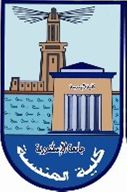 |
Faculty of Engineering, Alexandria University
|
| Outline Faculty of Engineering was established at the University of King Fuad I (Cairo) in the beginning of the academic year 1942-1941. Its branch in Alexandria for the preparatory class was in Arts and Crafts school at ElShatbi. A year later, a decree of establishing the University of King Farouk I was issued and this section became the starting point of Faculty of Engineering. Studying began in the Faculty in the academic year 1942-1943 AD for preparatory and freshman of 169 students, with no female students included. Then, establishing the department began by departments of Architecture, Civil Engineering, Mechanical Engineering and Electrical Engineering. The first class graduated at the end of the academic year 1945-1946 of 50-Bachelor students and only one post graduate student. The number of staff members, assistant lecturers and demonstrators was about 1279 with 13895 registered students in the academic year 2012-2013. The number of alumni in the academic year 2012-2013 is 2316 alumni of all specializations who will be added to more than 60,000 graduated alumni since 1946. [detail] --> |
|
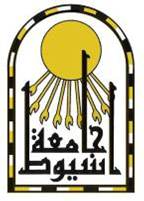 |
Geology Department, Faculty of Science, Assiut UniversityAssiut |
| Outline Assiut University was founded and established in October 1957 as the first university in Upper Egypt. In Upper Egypt, Assiut University has pioneered in preparing highly qualified graduates with the basic specialized academic knowledge and training expertise on the various necessary skills. Besides, the university offers an abundance of programs complying with the contemporary world changes. The university structure involves 16 faculties and 3 institutes. Geology Department is one of the oldest Departments in the University. It comprises 58 Staff members, 35 administrative and assistant capacity, 229 undergraduate students and over 30 graduate students. The Department has main missions that focus on education and research. Because Protection of the environment is needed due to various human activities and Environmental protection is influenced by three factors: environmental legislation, ethics and education. Each of these factors plays its part in influencing national-level environmental decisions and personal-level environmental values and behaviors. The Geology Department now offers courses, such as environmental studies, environmental management, environmental engineering, hazards prevention and/or mitigation that teach the history and methods of environment protection. [detail] --> |
|
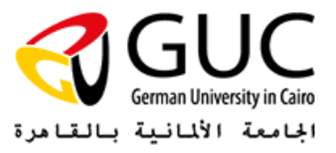 |
German University in Cairo (GUC)New Cairo City |
| Outline Building a leading centre of excellence in teaching and research that will effectively contribute to the general welfare nationally and internationally and endeavour the scientific, technical, economic and cultural cooperation between Egypt and Germany. The German University in Cairo, GUC, is an Egyptian Private University founded by the presidential decree 27/2002, according to the law number 101/1992 and its executive regulations number 355/1996. German university in Cairo/Deutsche Universität in Kairo is established in cooperation with the State Universities of Ulm and Stuttgart, under the patronage of the Egyptian Ministry of Higher Education, the Ministry of Science, Research and Arts, State of Baden- Württemberg, Germany, and supported by the German Academic Exchange Service (DAAD), the German Embassy in Cairo, the Arab/German Chamber of Industry and Commerce (AHK), the Federal Ministry of Education and Research, Germany, The State University of Tübingen and The State University of Mannheim. [detail] --> |
|
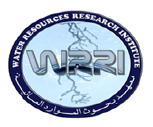 |
Water Resources Research Institute (WRRI), National Water Research Center(NWRC), Ministry of Water Resources and IrrigationEl-Khairiya |
| Outline The Water Resources Research Institute (WRRI) is one of twelve research institutes comprising the National Water Research Center (NWRC) of the Ministry of Water Resources and Irrigation (MWRI). It is located on the campus of the NWRC in El Qanater El khairiya, 25 km North of Cairo a short distance downstream the Delta Barrage overlooking Damietta Branch of the Nile. WRRI is pioneer in the fields of, Wadi hydrology studies, flash floods risks, the Nile River basin studies, groundwater development, and integrated water resources management. In addition, to plan and design appropriate projects for flood protection works, taking into account economic, environmental and social dimensions. WRRI is keen to engage innovative researches that enhance understanding of integrated Water Resources Management, and to implement effective strategies to address the barriers that have prevented full participation of women and stakeholders in projects. WRRI strives to maintain high standards of competence in its work. Vision: Making the WRRI a leader organization conducting cutting-edge research in water resources. Mission: To conduct, coordinate and integrate multi-disciplinary research to address critical national and regional priorities (Arab and Nile Basin Countries) in water resources. [detail] --> |
|
Bureau de Recherches Geologiques et Minieres (BRGM) Orléans Cedex |
|
| Outline BRGM is France's reference public institution for Earth Science applications in the management of surface and subsurface resources and risks. BRGM ("Bureau de Recherches Géologiques et Minières") is the French Geological Survey. The key objectives for BRGM are: i) Understanding geological processes and associated risks; ii) Developing new methodologies and techniques helpful in geosciences; iii) Producing and disseminating data to support the management of soils, subsoils and resources; iv) Delivering the necessary tools for the management of soils, subsoils and their resources, for risk prevention and for policy responses to climate change. BRGM's activities are organized around its 5 key roles: scientific research; support to public policy development; international cooperation; mine Safety and training through "ENAG" school. Scientific research at the BRGM is focused on furthering geological knowledge and understanding surface and subsurface phenomena. The key issue at stake is to meet the challenges of global change. Over 700 BRGM engineers and researchers - two thirds of its staff - are involved in scientific research. Support to public policy development covers all expert appraisals, monitoring and studies such as: surface/subsurface monitoring and disseminating knowledge; methodological studies and synopses to transfer research results to "civil society"; independent expert appraisals; and training or knowledge transfer. International cooperation is also one of the major roles: with over 200 projects each year in more than 40 countries, BRGM works across the globe towards enduring protection for people and resources. BRGM provides know-how and expertise in two main areas: i) protecting people and their environment against natural risks; ii) ensuring the permanence and quality of natural water, mineral and (geothermal) energy resources. Mine Safety, since 2006, has been entrusted to BRGM by the French State. Monitoring and action to prevent risks and pollution arising from mine closures are part of BRGM's missions. BRGM has state delegated responsibility for all mine safety engineering work. Through ENAG, the BRGM disseminates its scientific competences and techniques through a range of courses: higher education diploma courses in the geosciences, through training support and partnerships with higher education establishments; continuing professional training, through some sixty introductory and advanced courses in all geosciences fields.[detail] --> |
|
 |
European and Mediterranean Major Hazards Agreement
|
| Outline An international organisation in Strasbourg which comprises 47 countries of Europe. It was set up to promote democracy and protect human rights and the rule of law in Europe. The EU currently has 28 members that have delegated some of their sovereignty so that decisions on specific matters of joint interest can be made democratically at European level. No country has ever joined the EU without first belonging to the Council of Europe. EUR-OPA Major Hazards Agreement is a platform for co-operation in the field of major natural and technological disasters. Its field of competence covers the major natural and technological disasters - knowledge, prevention, risk management, post-crisis analysis and rehabilitation.
[detail] --> |
|
 |
Center for Disaster Management and Risk Reduction Technology (CEDIM) Eggenstein-Leopoldshafen Contact person: Prof. Michael Kunz |
| Outline The Center for Disaster Management and Risk Reduction Technology (CEDIM) is an interdisciplinary research center of the Karlsruhe Institute of Technology (KIT). CEDIM operates under the leadership and direction of the directorate, coordinator and deputy coordinator. The coordinating committee meets regularly to oversee CEDIM's conceptual and personal planning. The advisory board is a group of external advisers in the field of disaster management. In late 2011, CEDIM embarked on a new style of disaster research known as Forensic Disaster Analysis. In the new research program CEDIM Forensic Disaster Analysis (CEDIM FDA) CEDIM researchers will analyse disasters and their impact in near real-time. The core of CEDIM's new style of analysis is to examine disasters in an interdisciplinary manner with a focus on the complex interactions between (1) the natural hazard, (2) the technical installations, facilities, and infrastructures, and (3) the societal structures, institutions and capacities. In the years before, CEDIM's research activities were devoted to several projects and research groups. Between 2003 and 2008 the focus of CEDIM research was on three pojects: Riskmap Germany, Megacity Instanbul, and Modelling of extreme flooding events. The main goal in the first CEDIM project, the Riskmap Germany, was to conduct an area-wide quantification of natural hazards and man-made hazards in Germany risks. For each community, the natural hazard that is likely to cause the highest damage was identified. The Megacity Istanbul project was an interdisciplinary project to analyze the consequences of earthquakes in rapidly growing metropolitan areas. The aim of the research project modeling extreme floodevents was the development of a modeling system to quantify risks of extreme flooding in large river basins. In the system, computer models and modules are coupled together to simulate the functional chain: hydrology - hydraulics - polder diversion - dyke failure - flooding - damage estimate - risk assessment. [detail] --> |
|
Germany-EMI
 |
Fraunhofer Institute for High-Speed DynamicsErnst-Mach-Institut EMI Freiburg Contact person: Dr. Malte von Ramin |
|
Outline Long track record of successful research projects conducted around civil protection, disaster control, and risk identification and prevention such as the EU projects VITRUV , BESECURE, and INACHUS and ma ny other. Inhouse d evelopment of many proper simulation tools, i.a. CaESAR (Cascading Effect Simulation in Areas for increasing Resilience) and VITRUV Vulnerability Identification Tools for Resilience |
|
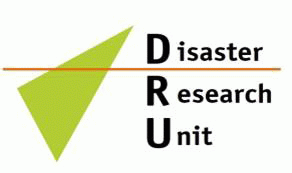 |
Disaster Research Unit (DRU), Department of Social and Political Sciences
|
| Outline The Disaster Research Unit (DRU) of the Freie Universität Berlin is a sociological and ethnological research institution specialising in interdisciplinary research into disasters. The DRU's body of work encompasses the entire "disaster cycle": from its inception, its progression, into its after-math and the associated reconstruction and coping. This research topically breaks down into risk perception, risk reduction, disaster prevention, preparation, warning and disaster behaviour, all the way to disaster coping and sustainable reconstruction for industrialised nations as well as the so-called "Global South". In addition to this, the DRU engages in social scientific and humanities basic research alongside other applied research and consulting. In all of this, the cultural and social aspects form the core pillar of the DRUs work. As the DRU maintains, disasters must be considered and understood within their cultural and societal contexts. For example, extreme weather situations only become risks when they collide with societal and cultural understandings, behaviours, and institutions. |
|
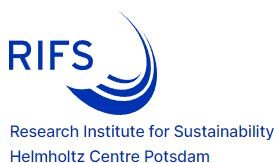 |
Research Institute for Sustainability Helmholtz Centre Potsdam (RIFS)Potsdam contact person: Dr. Pia-Johanna Schweizer |
| Outline RIFS conducts research with the goal of understanding, advancing, and guiding processes of societal change towards sustainable development. Its research practice is transdisciplinary, transformative, and co-creative. The institute cooperates with partners in academia, political institutions, administrations, civil society, and the business community to understand sustainability challenges and generate potential solutions. We live in an age of constant, rapid change. A person born in the early twentieth century would be overwhelmed by the complexities of modern-day life. Electric motors, the Internet, computers, jet aircraft, and robots are among the many side effects that have accompanied this evolution. While we experience many of these developments as passive observers, others are planned and promoted purposefully by individuals and societies. These developments are referred to as 'transformations'. |
|
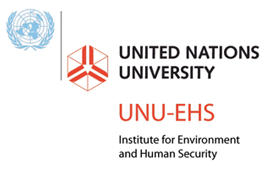 |
United Nations University
|
| Outline The world is in the midst of a global water crisis - where lack of adequate freshwater supplies and poor management threaten the health of both humans and ecosystems. Each year, two million people are killed due to diseases caused by poor water quality and inadequate sanitation, and the health of millions more is harmed. Coastal oceans provide some 20% of the animal protein in the human diet, but are in a perilous state due to climate change and local degradation. These water problems will continue growing as world population climbs and climate change alters global water distribution patterns. A critical factor contributing to the water crisis is the lack of indigenous capacity - educational, managerial, technological and institutional - for effective water management in many developing countries. UNU-INWEH acts as the "UN Think Tank on Water" and contributes to the resolution of the global water challenge through a unique programme of applied research and education. It conceives, develops, and manages water initiatives that help developing countries build their capacity for lasting improvements in human and ecosystem health, and overall reduction in poverty. The United Nations University is not a traditional university in the sense of having a faculty, campus, or students. We respond directly to the regional and global water crisis and facilitate efforts to meet UN Development goals by providing a scientific evidence base. UNU-INWEH carries out its work in cooperation with other research institutions, international organizations, individual scholars, and scientists throughout the world. |
|
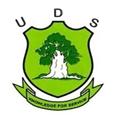 |
University for Development Studies (UDS)Tamale |
| Outline
UDS is promoting equitable socio-economic transformation of communities through
Students in local communities, do Needs Assessments and write an Intervention Proposal intended to solve problems identified in their selected communities. This orientation is important for research oriented towards education and assistance to the rural communities in need of disaster education. UDS has taken part in CECAR Africa project dealing in disaster management and resilience building as pilot for the entire Africa and made major impact in communities where project was implemented. We are yet to expand activities of the project to other parts of Ghana and Africa. We also need to link with relevant organizations both in Ghana as well as outside country. In this respect, GADRI Membership will be of immense help and support to UDS and its activities in collection disaster information, education and mitigation. [detail] --> |
|
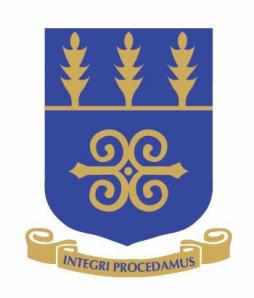 |
Department of Geography and Resource Development
|
| Outline The Disaster Risk Reduction Programme started as part of the Periperi U which is a partnership of African universities that spans across the continent and is committed to building local disaster risk related capacity. Established in 2006, with five original members, the partnership has grown to include eleven universities from Algiers to Antanarivo, with institutions in Algeria, Ethiopia, Ghana, Kenya, Madagascar, Mozambique, Nigeria, Senegal, South Africa, Tanzania and Uganda. The goal of Periperi U is to reduce disaster risks in among African countries through improved national and local disaster risk management, due to enhanced strategic human capacity to integrate risk reduction into critical developmental sectors and programmes. The partners of Periperi U believe this can accomplished through building and embedding sustainable 'multi-tasking' capabilities in disaster risk and vulnerability reduction capacity building in ten selected institutions of higher learning in Africa consistent with global disaster reduction priorities reflected in the Hyogo Framework of Action. Since 2006 to 2015, an average of three MPhil students are produced by the programme. Like most newly established programmes/centres, the major challenge has been finance needed to procure the necessary logistics and facilitate research in general.[detail] --> |
|
 |
Hong Kong Jockey Club Disaster Preparedness and Response Institute (HKJCDPRI)
|
| Outline The Hong Kong Jockey Club Disaster Preparedness and Response Institute (HKJCDPRI) was established in 2014 as a regional and international leader in disaster preparedness and response training, and to promote community resilience in Hong Kong. With funding support from the Hong Kong Jockey Club Charities Trust, HKJCDPRI is based at and led by the Hong Kong Academy of Medicine with a view to fostering Hong Kong as a prepared community to respond to disasters to reduce loss and suffering. We provide services in the following areas: Professional Development; E-Learning; Research & Policy Studies; and Community Engagement. The Hong Kong Jockey Club Disaster Preparedness and Response Institute (HKJCDPRI) and our working partners collaborate in conducting disaster preparedness related research and initiating policy discussion. Research and policy brief papers have been produced for multi-sectoral stakeholders to discuss global issues of disaster risk reduction, local and regional preparedness, community resilience, and also to develop, implement and evaluate related policies. Research studies and policy briefs published by the HKJCDPRI and its working partners have been disseminated through HKJCDPRI's network via various platforms to reach our target audiences. These findings facilitate development of sophisticated approaches of and generate innovative ideas for better disaster management. We work with research institutes and practitioners to conduct research to identify good practices and document lessons from disaster management operations. We share the valuable findings with the community and disaster management practitioners to develop better disaster preparedness solutions in future. Our researches range from field studies and survey research on groups, organizational and community preparations for response to, and recovery from natural and technological disasters. We believe that looking into real-life cases would generate important lessons and practical recommendations for the community. We also work with research institutes and disaster management practitioners to produce policy brief papers for multi-sectoral stakeholders to discuss global issues of disaster risk reduction, local and regional preparedness, and community resilience. From time to time, we organise policy discussion seminars to encourage idea exchanges among policy workers and disaster management practitioners. [detail] --> |
|
Iceland - University of Iceland
Earthquake Engineering Research Centre
|
|
| Outline The Earthquake Engineering Research Centre of the University of Iceland was established in the year 2000 with a special contract between the University of Iceland, Ministry of education, Ministry of justice, Township of Árborg and the Civil Defence department of Iceland. The main operation of the EERC consists of basic research, contract research, training of students for research, and building facilities for engineering education. The EERC is a part of the Faculty of Civil and Environmental Engineering of University of Iceland and has been active in engineering seismology and earthquake engineering research in Iceland for more than two decades. The research focus of EERC lies in earthquake ground motion monitoring and modelling, seismic hazard modelling and assessment, seismic design of structures, structural vibration monitoring, seismic risk reduction, community outreach and communication, and societal resilience to seismic risk. The EERC operates and maintains the only country-wide strong ground motion monitoring system in Iceland. It [detail] --> |
|
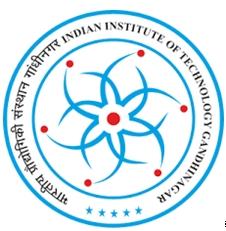 |
Indian Institute of Technology GandhinagarGujarat |
| Outline The Indian Institute of Technology Gandhinagar strives to offer the best undergraduate and graduate education in India with unmatched innovations in curriculum. The institute promotes critical thinking and an appreciation of the interdisciplinary character of knowledge, with an emphasis on the liberal arts, project oriented learning, compulsory courses in design and the life sciences, diversity and globalization. The five-week immersion Foundation Programme for all new undergraduate students was recognized with the World Education Award 2013 by the World Education Summit for innovations in engineering education. Nearly a quarter of its undergraduate students receive study abroad experience during their academic career. IIT Gandhinagar is committed to promoting excellence in science, technology, as well as the humanities and social sciences and to the development of rounded and nuanced minds. IIT Gandhinagar was founded in 2008 and is located in Palaj, Gandhinagar, Gujarat on the banks of river Sabarmati. Gandhinagar is in proximity to Ahmedabad which is one of the oldest living cities in India, known both for a rich cultural past as well as state-of-the-art infrastructure, thriving industries, and many modern amenities. The city is also the hub of prestigious academic and research institutes, such as the Indian Institute of Management, Ahmedabad, and the National Institute of Design. Gujarat's long standing mercantile and business tradition encourages excellence and entrepreneurship. IIT Gandhinagar offers BTech and MTech programmes in Chemical, Civil, Electrical, Mechanical and Materials Science and Engineering and also offers MSc programmes in Mathematics, Physics, Chemistry and Cognitive Science. It also offers MA programme in Society and Culture. Ph.D. programmes are offered in all the engineering and science disciplines such as Chemical, Biomedical, Civil, Electrical, Mechanical, Computer Science and Materials Science and Engineering, Chemistry, Physics, Mathematics, Earth Science, and Cognitive Sciences. Apart from the graduate programmes in engineering and science, institute also offers PhD in Literature, Philosophy, Psychology, Sociology, political sciences and Social Epidemiology. Safety Centre is one of the prominent centres at IIT Gandhinagar. The objective of the IIT Gandhinagar Safety Centre is to promote safety in public and private spheres, industry and the informal sector. The Safety Centre advances these objectives with activities to Discover (Research and Development), Teach (Offering safety courses in UG and graduate curriculum), Outreach (through Conferences, Workshops, Seminars, Symposia and training Professionals from Academia and Industry) and Practice. [detail] --> |
|
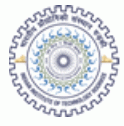 |
Center of Excellence in Disaster Mitigation & Management
|
|
Outline The centre is a multidisciplinary research and education centre. The main aim of the educational program is to impart advanced knowledge on technical and managerial skills to the professionals to make them equipped with innovative technologies for effective mitigation and management of disasters for the overall benefit of the society. [detail] --> |
|
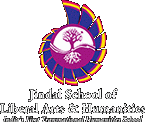 |
Jindal School of Liberal Arts and Humanities
|
|
Outline Pedagogy becomes crucial because it is the act of teaching that is the eventual educational act, a drama unfolding everyday around a canonical text, an invitation to re-reading, as an unfolding invention. These attributes and approach make JSLH one of the best colleges for humanities. There is also the dream of democracy. Liberal arts and humanities provide the syllabus for a democratic way of life. It is here that cosmos, a community, a constitution and a syllabus can all integrate into a four-fold way of life we can call democratic. The ideas of a cosmos invokes world views anchored in religions and civilizations, creating a relation between man, nature and god, creating a multiverse of meanings, where old dichotomies between politics and religions, science and religion are re-explored. A cosmos needs a community or a neighborhood of communities to embed it and embrace it. A community needs a history, a story teller and an ethics of memory which becomes the basis of an ethics of caring. Liberal arts and humanities is fundamentally about responsibility, leadership and judgment, the creativity of standing up for something. [detail] --> |
|
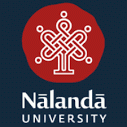 |
School of Ecology and Environment Studies (SEES)
|
|
Outline Rooted in the tradition of the ancient Nalanda University, the School aspires to generate critical understanding that will benefit the globe. The School also seeks to bridge the current gap in the study of environmental issues between the Western and the Eastern perspectives. It addresses pressing local, regional and global environmental problems of our times through education, research, collaborations, and policy recommendations. [detail] --> |
|






